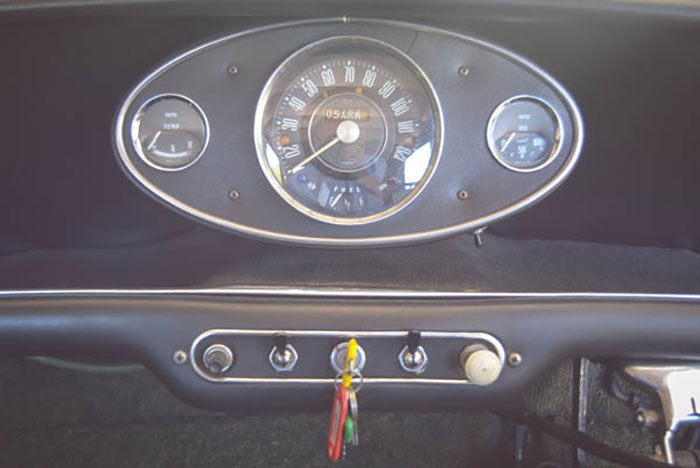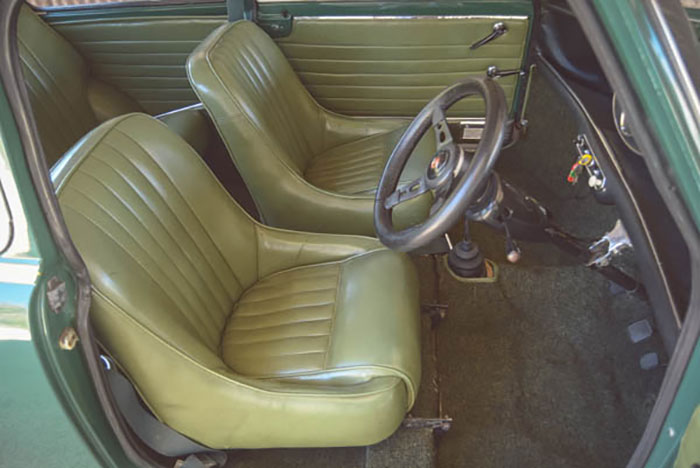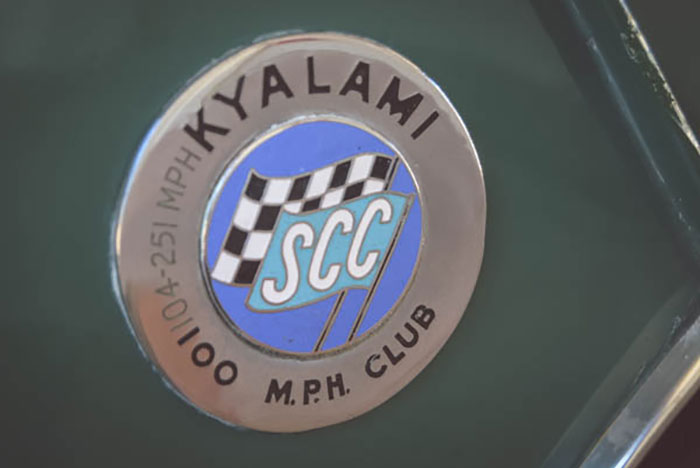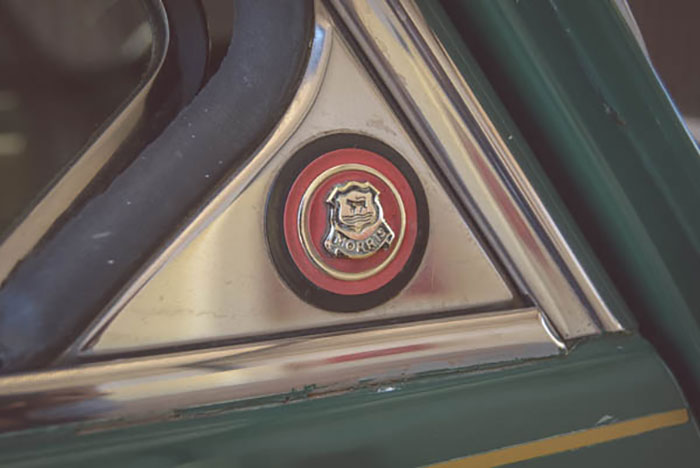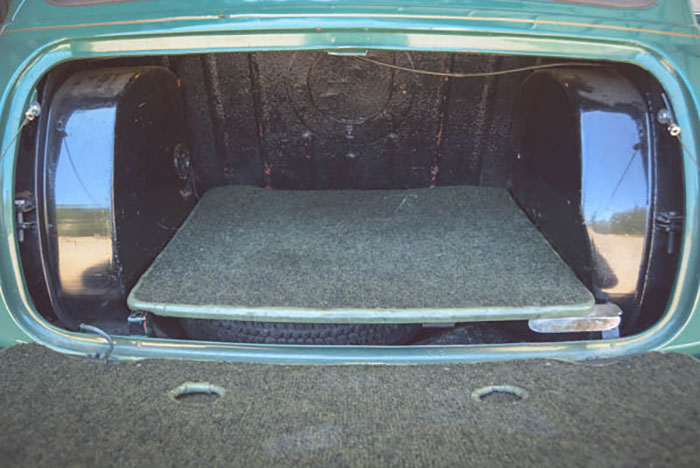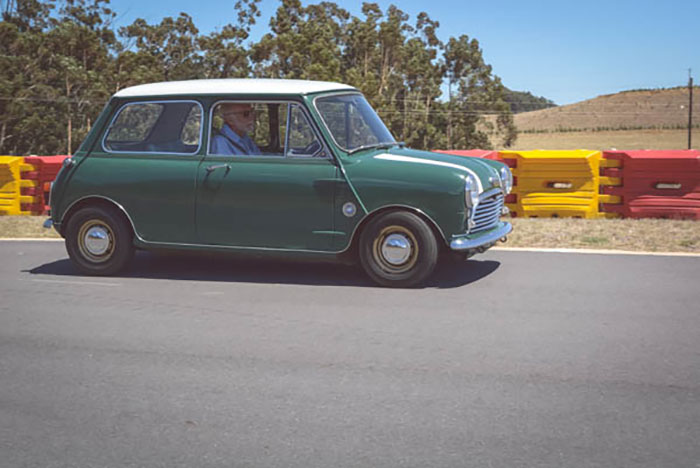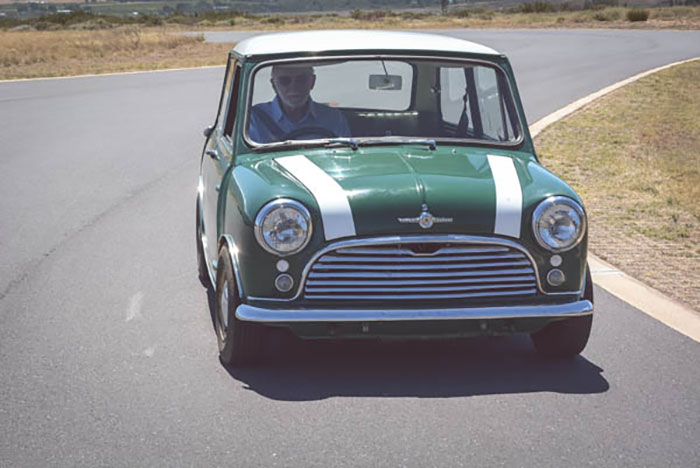
24 Jan COLLECTION IN ACTION – M
An alphabetical series of short driving impressions of some of the museum’s car collection. This month we downsize to an Austin in disguise and its place in a Cooper’s tale.
Without doubt, the Mini ranks as one of the world’s most influential cars. Not simply because it made motoring affordable to so many when it appeared in 1959, but in doing so it set some trends that reinvigorated an industry that globally had only just got back on its feet after the war years. Front-wheel drive with the gearbox mounted underneath, Hydrolastic suspension, minimalist interior with a centre-mounted speedo – the Mini was compact and cute and destined to become an automotive icon. And it did not take long for there to be a desire to make it go faster, led by one of UK’s motor sport heroes, John Cooper.
Cooper was a co-founder, with his father Charles, of the Cooper Car Company and became an auto racing legend with his rear-engined chassis design that would eventually change the face of the sport at its highest levels, from Formula One to Indianapolis. As a friend of the Mini’s creator, Alec Issigonis, Cooper saw the car’s potential for competition and although Issigonis was initially reluctant to see the Mini in the role of a performance car, Cooper appealed to BMC’s management, leading to the two men collaborating to create the Mini Cooper in both Austin and Morris derivatives in 1961.
BMC’s A-Series 848 cm3 in-line four from the Morris Mini-Minor was given a longer stroke to increase capacity to 997 cm3. The race-tuned engine featured twin SU carburettors, a closer-ratio gearbox and (uncommon at the time in a small car) front disc brakes. The car was an instant success and in 1962, Rhodesian John Love driving a Mini Cooper became the first non-British driver to win the British Saloon Car Championship. South African Tony Maggs was also a works driver.
The 997 appeared in SA in 1962 and was only available in Palm Green (close to British Racing Green) with a white roof and gold-painted wheels. The instrument panel boasted additional gauges for oil pressure and water temperature and a remote gearshift was adopted. The car was an instant success and, incidentally, helped create motoring history when East London service station owner Des Ally became the first Coloured person to participate in a national race meeting, winning the Group N race at PE’s St. Albans track on 14 March 1964 in his 997 Cooper.
In 1963, the engine bore/stroke was altered to achieve a 998 cm3 capacity but the following year this, too, was replaced, this time by a 1071 cm3 unit, which launched the second Cooper model to carry the S suffix. The second? Well, yes, because in the UK there was a short production run of a 970 cm3 Cooper S model that preceded the 1071, but it never came to SA although some local tuning shops made copycat engines. The 1071 Cooper S was launched here in July 1964 in both Austin and Morris guises and were assembled from CKD packs (Completely Knocked Down) as opposed to being manufactured, and as a sop to the country’s local content programme of the time, these cars boasted unique locally-made front bucket seats amongst a few other small home sourced items. The 1071 lasted a year before the 1275 cm3 Cooper S arrived in July 1965, of which FMM’s model is an example – but with a twist..
In comparing notes with SA’s ‘Mr Mini’, Ryno Verster, it appears as though FMM’s car is a 1967 Morris Cooper S. As no records from Leyland’s Blackheath plant survive, Ryno has over the years compiled his own records (and written an excellent book titled A South African Mini Story). Given the car’s body (C-A2S7 – 892853) and engine (9F-SA-Y 42820) numbers, the car is a Morris version with the ‘smiley’ grille, and Morris bonnet, boot and steering wheel badges but in all other specs similar to Austin 1275 units. It features the famed SA bucket seats, wind-up windows (referred to as Australian windows and introduced in January 1967) and twin tanks, which were standard on all 1275s. Other identifying components include the ‘wet’ Hydrolastic suspension and an oil cooler fitted horizontally behind the grille in front of the distributor.
According to the UK Heritage records of CKD units exported to South Africa, 12 CKD 1275 units were dispatched to Blackheath on 15 September 1966 with body numbers ranging from 892844 to 892855. The FMM car number 892853 is indicated as an Austin unit but on the same date, seven Morris units were also shipped to Blackheath – an anomaly that cannot be explained. From Verster’s register of 42 Mk.1 1275 units, only five were numbered with the international body prefix code for 1275 Morris Cooper S units, namely K-A2S4. All the rest used the C-A2S7 international Austin body prefix. In the Heritage records of the 264 Mk.1 units sent to South Africa, 71 were Morris 1275 Cooper S units and the remainder were Austins.
So, the FMM car’s credentials are somewhat intricate but, bottom line, it’s a pukka S and as SCC badging on the fenders proudly displays, at some point the car achieved 104,251 mph (167,775 km/h) at a top speed day at the old Kyalami. The car still has plenty of go and brings a smile to the faces of everyone who drives it. Although the gearshift is a bit clunky (early Mini remote shifts were renowned for being problematic), frequent cog swopping to keep the motor buzzing is not necessary because the legendary roadholding is so good that tackling the twisties requires only occasional lifting off the accelerator. This car has the period mod of a dropped steering column angle, which complements the low-set local bucket seats that, although small, give adequate body support.
For anyone long-legged like me, the driving position is a bit ‘sit up and beg’ – but who cares? The S goes where you point it and although it may be a tad raucous and the Hydrolastics provide a surprisingly soft ride for something as sporty as this, even today old Minis are a hoot to drive. Cooper and Cooper S derivatives were driven to competition successes around the world for many years and left a legacy to be proud of.
MM – with grateful thanks to Ryno Verster for sharing his expertise on South African Minis.
